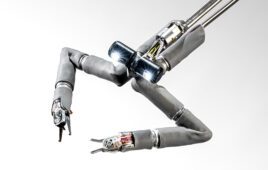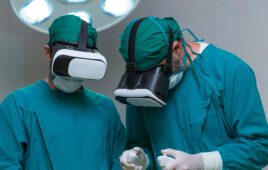
Balloon angioplasty procedure with placing a stent [Image from Jordi Labs]
James Woods, Jordi Labs
Medical device industry leaders these days are driving results at an ever-increasing pace. Amid patent limitations, intense competition and acute regulatory scrutiny, there’s a rush to get results that demonstrate safety and efficacy.
Jordi Labs (Mansfield, Mass.) is a contract research lab that’s frequently tasked with meeting these needs while maintaining a high degree of confidence and scientific certainty.
Here are four basic recommendations we have when it comes to validation and testing:
1. Understand the testing regulations and guidance
Validation and testing, particularly for regulatory studies, is best prescribed by carefully considering the regulations and guidance relevant to your test article. Each project has unique requirements, whether the test article is a medical device, a bioprocess system or a combination device. Additionally, understanding the relevant background information is critical. Two key questions are 1) What is the test article composition? and 2) How is the test article going to be used?
Answering these enables you to conduct testing in a way that produces results representative of the actual use conditions. It is also generally good practice to go a little on the stronger side of the simulated use condition with temperature, time or solvent to effect a greater margin of safety. Additionally, to simulate the use conditions, it may be necessary to design custom extraction equipment and validate novel analysis techniques to ensure results are the best in terms of accuracy and scientific certainty.
2. Pay attention to details
Sometimes simple things like the wet chemistry required for sample preparation are overlooked while using advanced instrumentation. Whether it’s digestion for ICP-MS, volatiles analysis or concentrating a sample, the steps immediately prior to the analysis often play a critical role in the veracity of results. What seems like a slight modification to the sample preparation may pivotally alter the accuracy of an assay. This is why any modifications should be validated for accuracy, precision and intermediate precision.
3. Choose your instrumentation wisely
Although sample preparation is the foundation of any good analysis, it’s also important to use the latest advanced instrumentation, such as high-resolution mass spectrometers. High-resolution mass spectrometers, in conjunction with comprehensive compound libraries, allow unambiguous identification of chemical species. Once a chemical species is correctly identified, accurately quantifying the species is the next concern. Species like oligomers, reaction intermediates and process degradants can be particularly challenging to quantify – especially when they’re not commercially available. When they are commercially available, or when using a surrogate standard, consideration should also be afforded to selecting the right detector for a compound. When you’re trying to maximize a method’s accuracy, it is important to remember that there are tradeoffs between detectors like UV/Vis, CAD, ELSD, IC and QTOF or QqQ MS. These tradeoffs can drastically affect validations for parameters like specificity, accuracy and precision.
4. Understand the regulatory framework
Regulatory guidance providers – including ICH, the FDA, the EC as well as standards providers such as ISO, USP, and ASTM – have some general consensus on concepts. But there are frequently significant differences in details. One set of guidances could spell out minutia like the number of replicates, extraction ratios, and acceptable time, temperature, and solvents while another may leave them nebulous or open to selection. Navigating this guidance to determine parameters like precision, intermediate precision, accuracy and robustness frequently requires a careful understanding of the applicable regulatory framework for a medical device.
In summary, there are a few key features we’d like to emphasize in a successful validated analysis. Understanding the background information for your medical device is the foundation of study design. Pay attention to details as you perform your analysis because minor changes frequently have a significant effect on your results. Using advanced instrumentation can reduce unanswered questions, but it’s also important to understand the limitations of your instruments. A firm understanding of the regulatory guidance is required to avoid analysis pitfalls and potential costly regulatory delays.
Finally, a strong focus on patient safety should be the bedrock upon which all decisions are made.
James Woods is a senior research scientist at Jordi Labs (Mansfield, Mass.). He has a demonstrated history of working in the chemicals industry, with a PhD in chemistry from Carnegie Mellon University.




